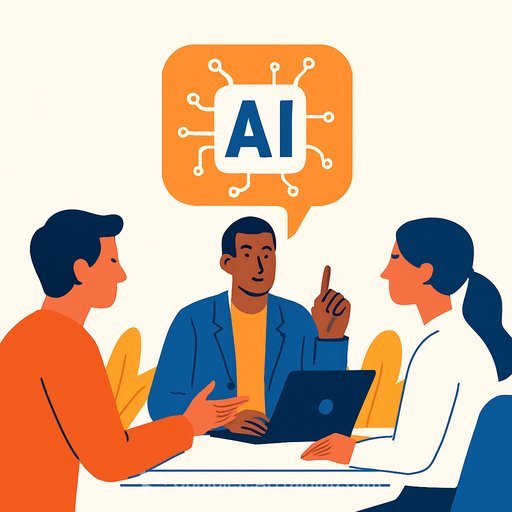AI in HR: From Hesitation to Practical Wins
AI is already changing how work gets done, yet many HR teams are still unsure where it fits. A recent Mercer survey shows 30% of HR leaders haven't adopted AI. Of those who have, 56% lack confidence in their tech optimization, and only 4% believe their stacks are truly optimized. That gap between adoption and impact has been called an "AI confidence crisis."
This hesitation makes sense. HR hasn't had its "killer app" moment-the breakthrough that makes adoption obvious, like Lotus 1-2-3 did for PCs. But the risk of waiting is larger than the risk of imperfect execution. Teams that ignore AI will be outpaced by those who learn to use it well.
Strategies for AI Adoption
Think Challenges > Technology
Start with business problems, not tools. Define the friction: screening overload, long time-to-hire, weak engagement, inconsistent internal mobility, or sloppy data. If AI is the best fix, use it. If not, don't force it.
Expect Imperfection
Most AI is non-deterministic. It will make mistakes. The right comparison isn't AI vs. perfection-it's AI vs. your current baseline. If an AI resume screener is 90% accurate and a human is 75%, that's a material gain in speed and quality.
Humanize It
HR carries empathy, context, and judgment that software can't replace. Automate the repetitive parts, not the relationships. Keep humans in the loop for decisions that affect people's lives and culture.
Vet Your Vendors
Reject black boxes. Ask vendors to explain training data sources, model usage, bias mitigation, and audit trails. You need this for compliance, risk management, and trust. If they can't answer clearly, walk away.
Where AI Is Already Delivering: Resume Screening
Screening is the first choke point in most recruiting funnels and a common sink for junior staff hours. AI tools can parse resumes at scale, flag qualified profiles, and reduce bias from manual reviews. That frees recruiters to do what AI can't: build relationships, probe for fit, and make balanced calls on complex trade-offs.
A Simple Plan You Can Run This Quarter
- Pick one problem: e.g., reduce time-to-hire for a critical role family by 20%.
- Define your bar: baseline metrics, accuracy targets, SLAs, and acceptable risk.
- Pilot with a guardrail: small scope, human-in-the-loop review, clear escalation paths.
- Control risks: fairness checks, bias testing, data privacy review, clear documentation.
- Train your team: show people how to use prompts, review outputs, and flag issues.
- Measure and iterate: compare results to baseline, expand only if the value is real.
What To Ask Before You Sign
- Data and bias: What data trained the model? How are bias and drift monitored?
- Performance: What is accuracy by use case? How is it benchmarked against humans?
- Governance: Is there an audit trail? Role-based access? Compliance mappings?
- Privacy: Where is data stored? How is PII handled? Can you opt out of model training?
- Control: Can you tune, set thresholds, or add custom rules and prompts?
- Support: What onboarding, change management, and success metrics do they offer?
Addressing the Job Anxiety
Will AI replace HR roles wholesale? Unlikely-at least for now. What it will do is strip out drudgery and reshape jobs. The teams that benefit use AI to scale their judgment, not replace it.
The Bottom Line
Confidence won't come from adopting every shiny tool-or rejecting them all. It comes from a clear problem, a tight pilot, and proof that the results move the business forward. The teams that win won't necessarily move the fastest; they'll move with purpose and ship value to their people and operations.
Next Step
If you're mapping skills and tools for HR-specific use cases, explore curated options here:
Your membership also unlocks:






